The World Trade Center, while a major presence on the skyline and the Lower Manhattan node, created and reinforced many significant urban problems. Offering little functional diversity, it existed in isolation from the surrounding urban fabric and from Battery Park City. Since it did not integrate public transportation systems, it fostered the creation of a major on-grade highway. And the buildings themselves were not architecturally or urbanistically distinguished. Our project proposes to address these urban issues in the following ways.
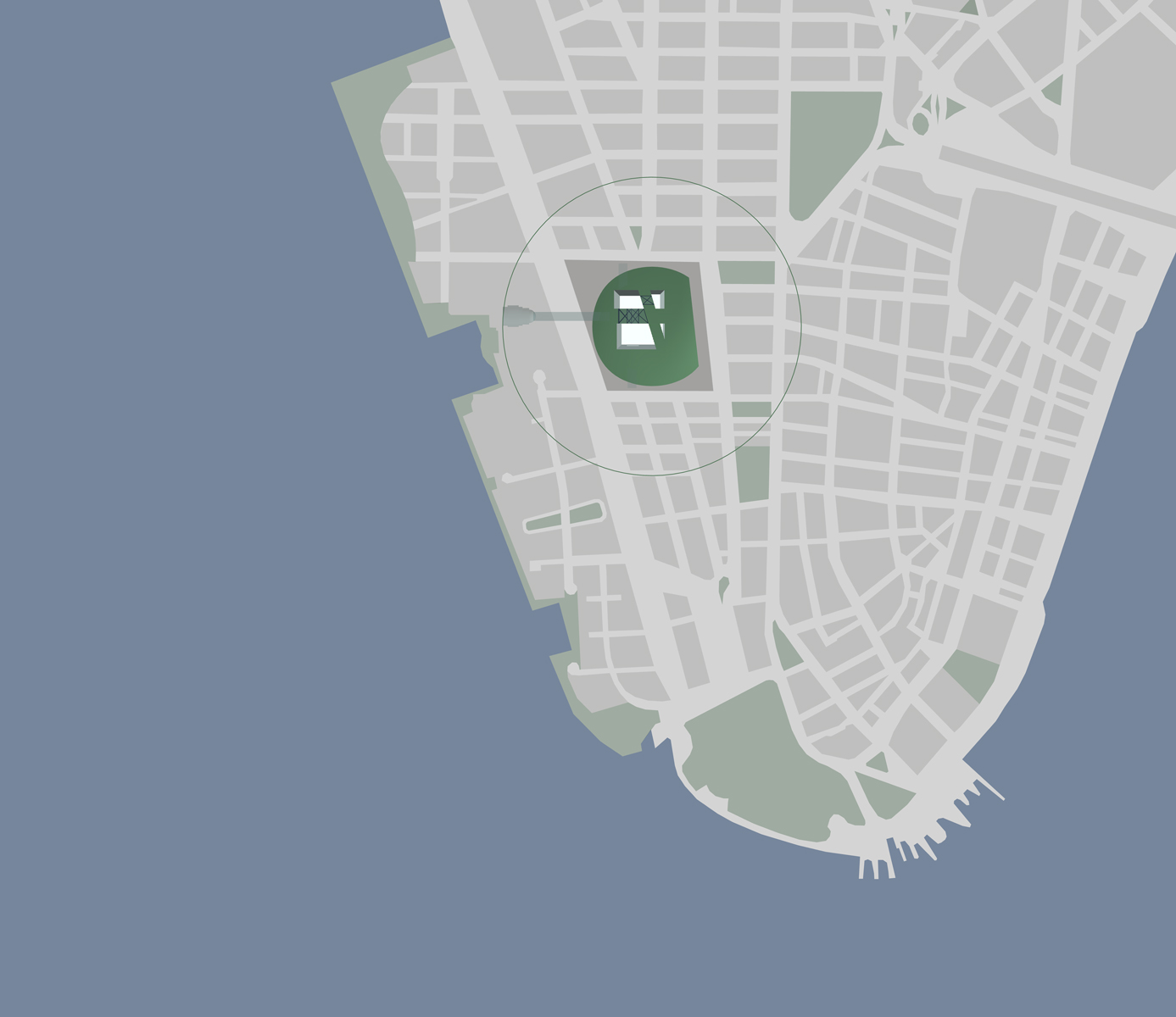
ROADS, BLOCKS, BUILDINGS
Historically, the site had evolved from an undifferentiated grid of blocks oriented towards the commercial activity of Hudson River piers. Subsequent construction of the Brooklyn Battery Tunnel and buildup of the West Side Highway into a major through artery severed these crucial links to the west. The World Trade Center, a massively overscaled development within this cloistered precinct, radically altered the area and further disrupted existing site links. It subsequently became apparent that the new Battery Park City is effectively isolated from Lower Manhattan and from public transportation, which prompted a rather haphazard introduction of pedestrian bridges in an attempt to mitigate the problem. Our project proposes to clarify the relationships to the river and to the rest of Downtown by reinforcing the pedestrian east-west link through alignment with the Wintergarden, by depressing the express lanes of the Highway below grade, and by providing a major enclosed pedestrian bridge between the proposed Station and the World Financial Center.
PUBLIC TRANSPORTAION - TRAINS, FERRIES
Transportation needs of the area were originally served by a number of competing private ferries and tramlines. Development of the subway and commuter rail systems followed the same pattern, and the systems were never linked. The proposed Station will correct this problem and greatly facilitate commuter flow into and through Downtown.

TRANSPORTATION LINKS AND CIRCULATION
The project links the consolidated train and subway station with bus, taxi and ferry lines, providing a major transportation hub for Downtown and bringing a substantial population directly to the site. Primary horizontal circulation through the site reinforces the east-west link between Downtown and Hudson River, taking advantage of the existing Wintergarden to incorporate the World Financial Center. Additional horizontal links are introduced at sky-lobby levels, which also provide increased safety through redundant exiting.
24HR USE CYCLE
Multifunctionality is a prerequisite for a vibrant 24-hour urban life. The flexible mix of uses the project proposes will guarantee such continuous activity.

CONSTRUCTING THE SKYLINE
The image of the skyline is an important way of understanding the city as a whole. Our project grafts itself onto the existing cityscape and re-introduces the pyramidal profile that has always been identified with Lower Manhattan. By breaking down the building mass into discreet elements and terminating the towers at varying irregular heights, we allow the project to simultaneously read as a single entity and as part of the continuum of urban fabric.
SCALE
Manhattan - and Lower Manhattan in particular - is characterized by radical juxtaposition of scales. It is one of the aspects of the urban fabric that makes the experience of New York so unique and exciting. The project exploits this condition by, for example, scaling one of its four towers to the height of the steeples on Trinity Church and St. Paul's Chapel.
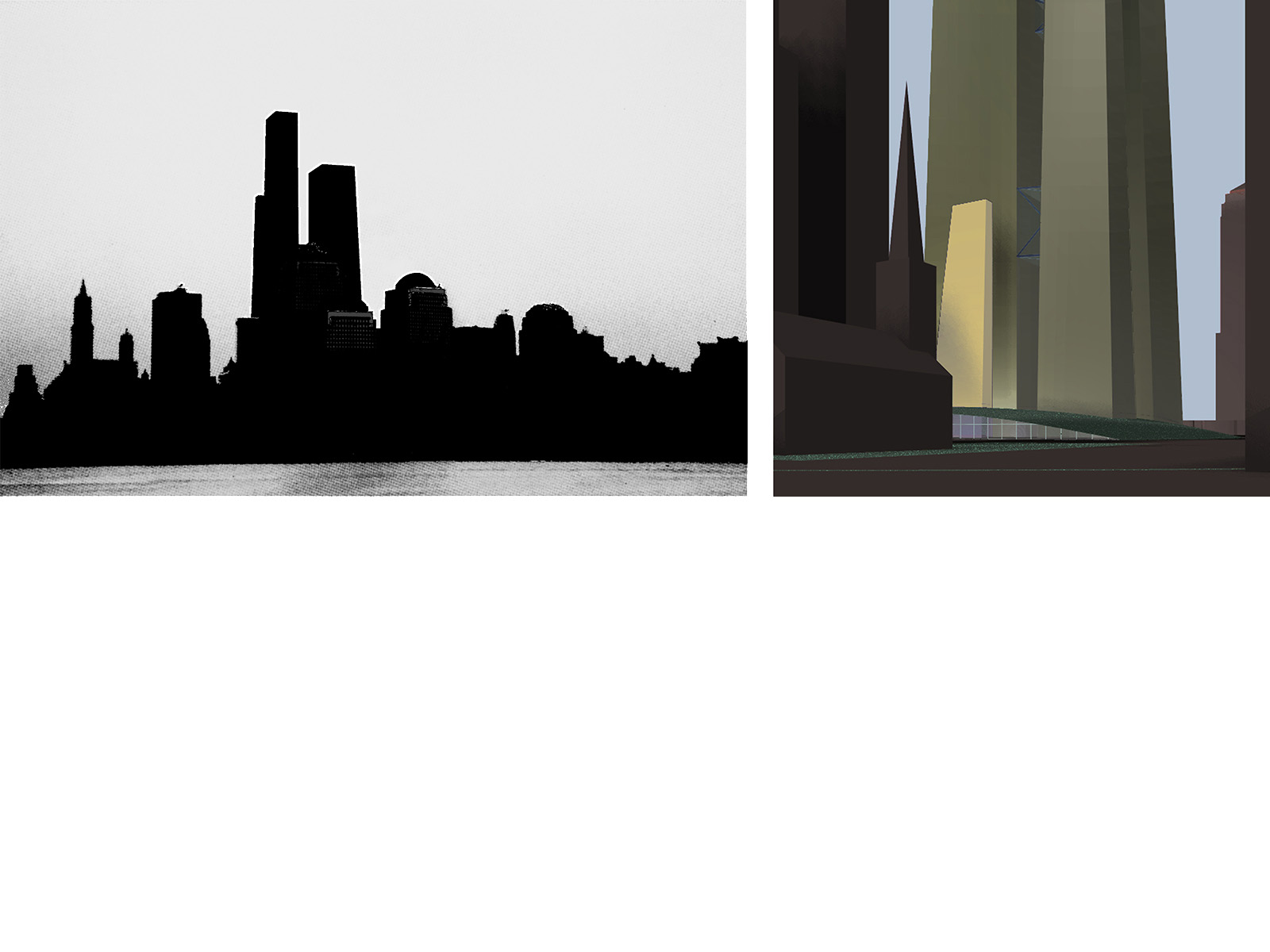
THE BUILDING
Base
A "big roof" space, a "collector" easily legible as an identifiable place. With its major orientation toward Church Street, it contains multiple public functions on four levels.-2 Commuter train platforms, -1 Subway platforms, 0 Station, shopping, cultural spaces, building lobbies, +1 Shopping, bridge to WFC.
Memorial
A precinct that occupies the roof of the Base and extends into a larger outer precinct designated as a Memorial Zone.
Towers
Three tall ones and one short, terminating at different heights to create a dynamic skyline profile. The scale of the lowest tower is related to that of St. Paul's Chapel and Trinity Church. The towers are separated by "cracks" the width of city streets; they allow for natural light and views and reinforce the relationship to urban fabric. SW Tower - offices, satellite station; NW Tower - offices, residential, hotel, observation deck; NE Tower - offices, live / work spaces; SE Tower - visitor center, signage. Atrium / Bridges - elevator sky-lobbies connect the buildings functionally, create public spaces with city views, and serve as additional means of egress. They contain public functions - shopping, hotel and apartment lobbies, meeting facilities, restaurants, etc.
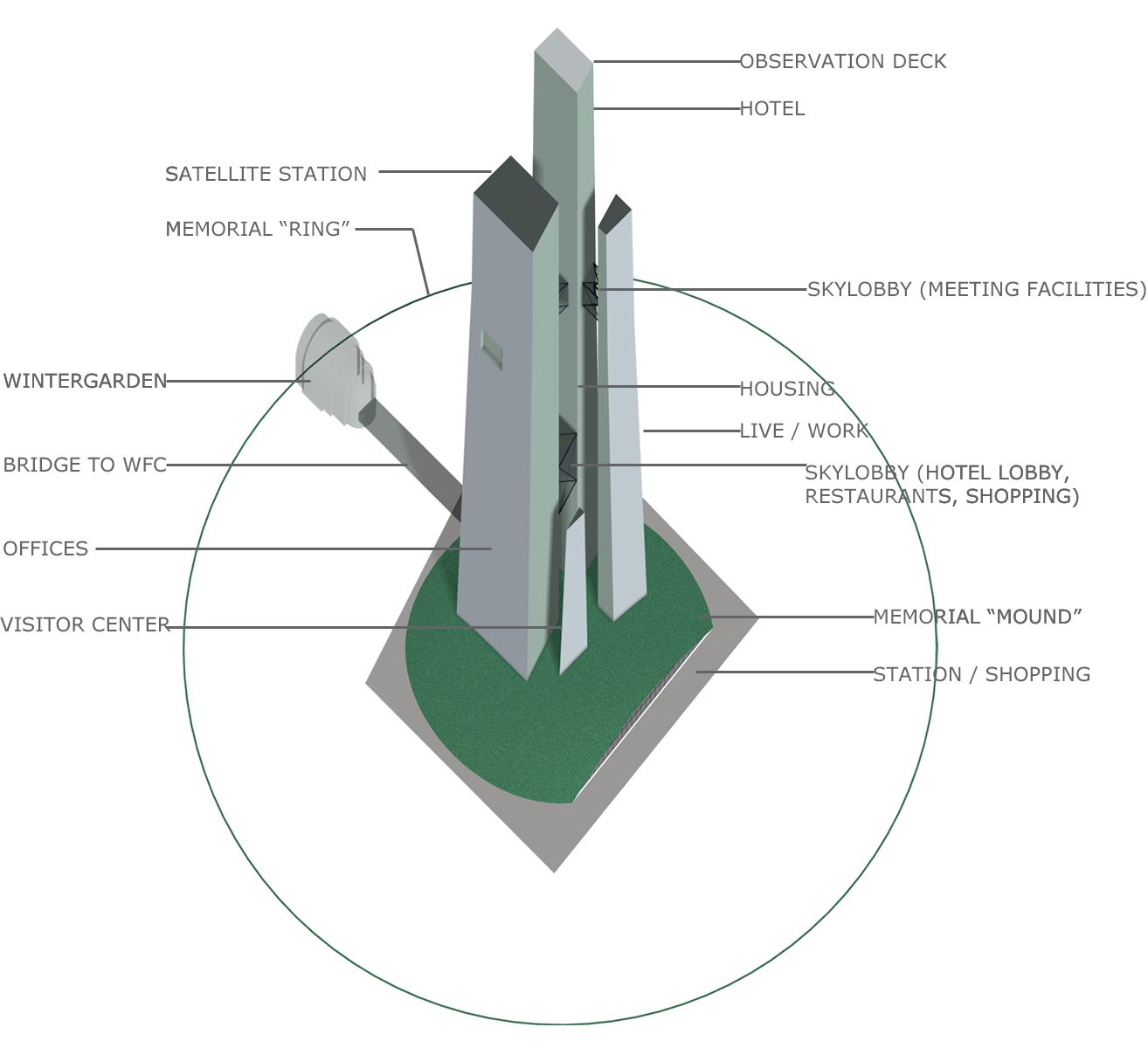
THE BUILDING COMPLEX
The varied massing of the project elements, in close proximity to one another, creates ever-changing views and an interplay of light and shadow.

THE MEMORIAL
The Memorial is conceived of as a "precinct" or a "zone" rather than as an isolated place or an iconic object. The events of September 11 affected not only the victims and their families, but the City as a whole and the society at large. The number and diversity of lives randomly thrown together in this tragedy, and the impossibility of recovering so many of the remains, compelled us to imagine a memorial capable of accommodating the multitude of thoughts and feelings projected onto and taken away from this place. It is designed not to have a specific narrative program but to be open to evolving interpretation and to accumulation of insights about the event. It contains six major elements.
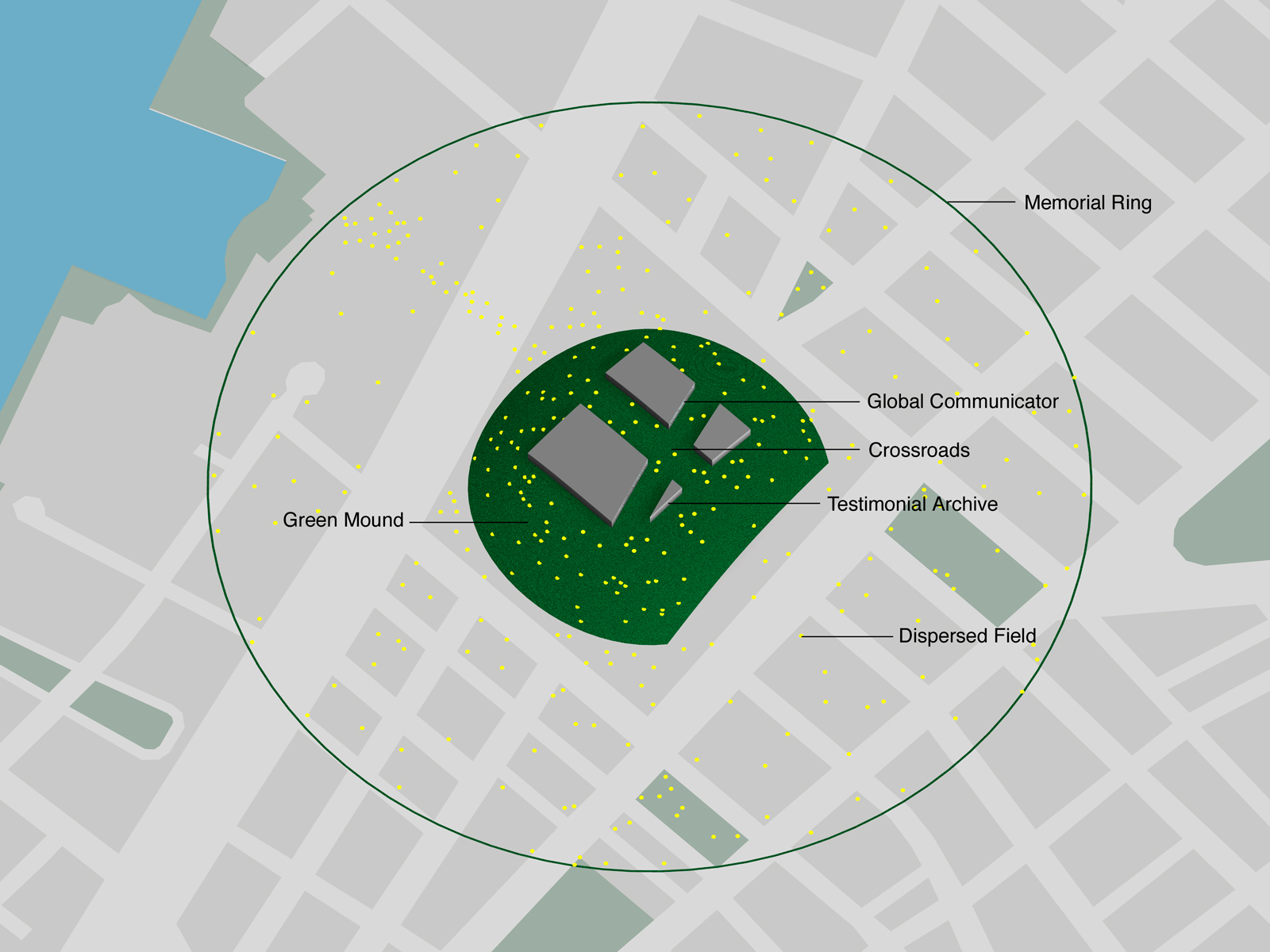
GLOBAL COMMUNICATOR
The ground level of the crossroads is wrapped in large screens equipped with videoconferencing technology (camera, microphone, instant translation). Similar screens are placed in other public spaces around the world. Visitors can step up to the screen and communicate directly with others far away, thereby collapsing the scale of mass media to the level of the individual, acted out in public space.
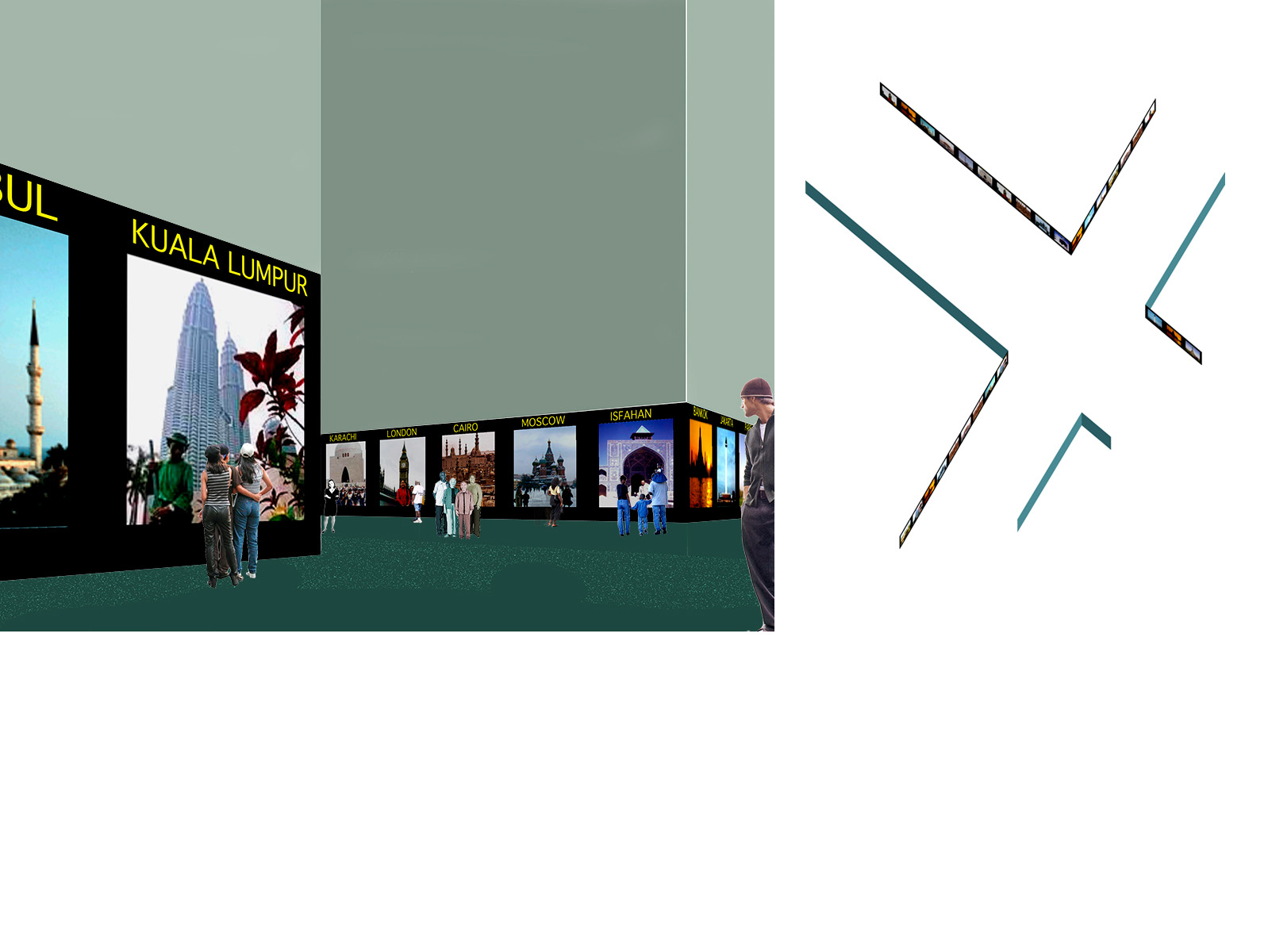
VIEW FROM THE CROSSROADS
The project is based on the concept of Building-As-City - a "combine building", a collection of densely grouped towers separated by cracks the width of a typical city street. This concept makes for a richer and more complex experience of such a large-scale development, allowing it to be perceived simultaneously as a singular coherent entity and as a series of distinct objects integrated into surrounding urban fabric. The reading of the buildings in relation to the cityscape is multi-layered, depending on whether they are viewed from far away, at middle distance or up close. One's experience of them also changes depending on one's geographic vantage point.
The idea of the hyper-dense modern city was developed in New York. There are very few other places in the world - or even in New York - that can successfully sustain this kind of intense, multifunctional, large-scale development.
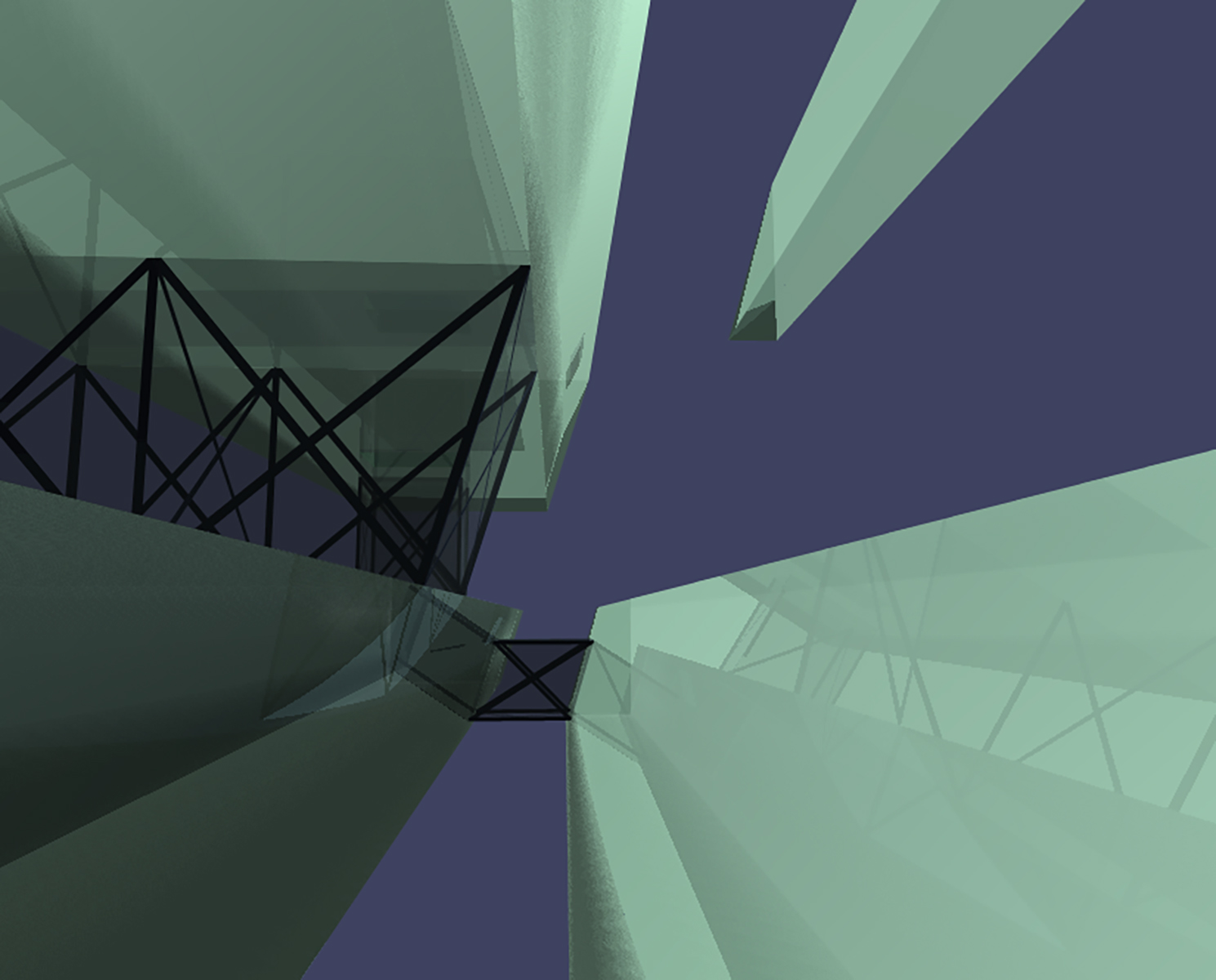
Ground Zero
Lower Manhattan, New York